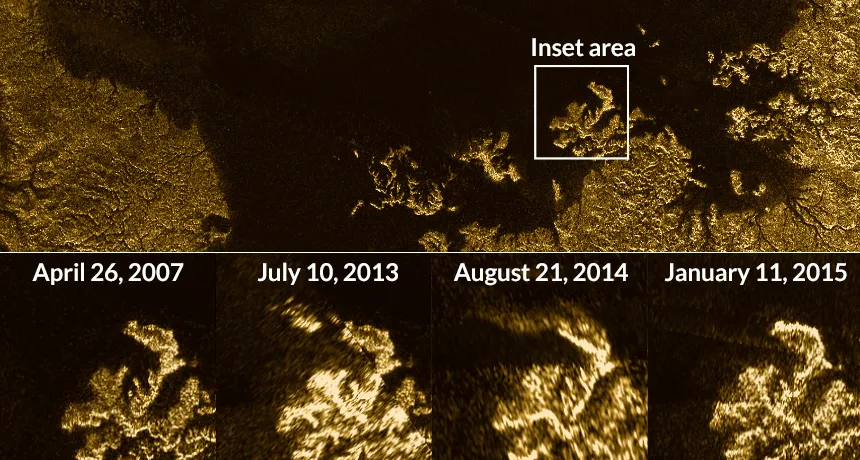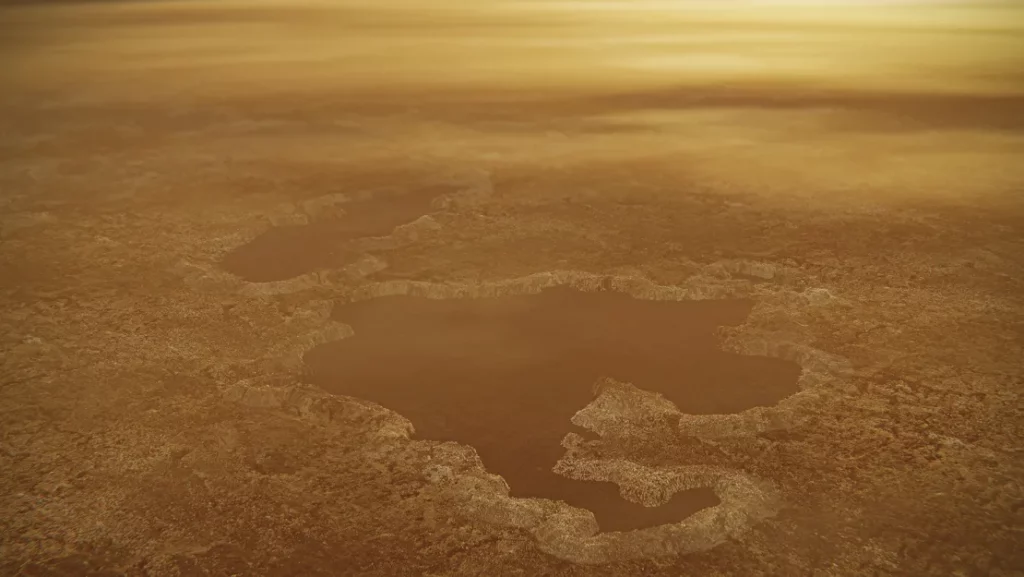
The bright spots that appear and disappear on Saturn’s largest moon, Titan, may be floating clumps of glacier-like snow shaped like a honeycomb. Astronomers first spotted the so-called “magic” islands in 2014 and have been trying to figure out what they represent ever since. Now, we may finally have an answer.
Titan is enveloped in a dense, hazy orange atmosphere that is 50% thicker than Earth’s and is abundant in methane and other organic molecules. The moon’s surface features dark dunes of organic materials, alongside vast seas of liquid methane and ethane. Stranger yet are the bright spots on the seas’ surface.
They can last a few hours to several weeks or more and were first spotted by NASA’s Cassini-Huygens mission, a spacecraft that shared the wonders of Saturn and its moons. Previous studies suggested that the “magic” islands were phantom islands (structures that merely appear to be islands that are caused by waves) or real islands made of suspended, floating solids or gas bubbles.
Xinting Yu, the study’s lead author, took a closer look at the interplay between Titan’s atmosphere, liquid lakes, and the deposited solid materials on the moon’s surface.
“I wanted to investigate whether the magic islands could actually be organics floating on the surface,” he said in a news release.


Titan’s upper atmosphere has a variety of dense organic molecules. These molecules tend to aggregate, freeze, and descend onto the moon’s surface, covering even its remarkably still methane rivers and lakes, where waves measure just a few millimeters in height.
Yu and her team were intrigued by the destiny of these aggregated organic masses upon reaching Titan’s hydrocarbon lakes. Would they sink or float? The team first looked at whether Titan’s organic solids would dissolve in the moon’s lakes. Since the lakes are already saturated with such particles, the researchers found that the solids wouldn’t dissolve in the liquid.
“For us to see the magic islands, they can’t just float for a second and then sink,” Yu said in a news release. “They have to float for some time, but not forever, either.”
Titan’s methane lakes and seas both exhibit low surface tension, which makes it hard for solids to float. The models show that most frozen solids were too compact, and the surface tension too low to create the “magic” islands – unless the clumps were permeable, just like Swiss cheese or a sponge riddled with holes.
The team found that if the icy clumps were large enough and had the appropriate ratio of cavities and narrow tubes, liquid methane could permeate slowly enough to allow these clumps to persist at the surface.
As well as unravelling the mystery of the “magic” islands, the researchers also offered an explanation as to why Titan’s water bodies are so calm. They argue that a thin layer of frozen solids coats Titan’s seas and lakes, which makes the liquid methane unusually smooth.
The study was published in the journal Geophysical Research Letters.
